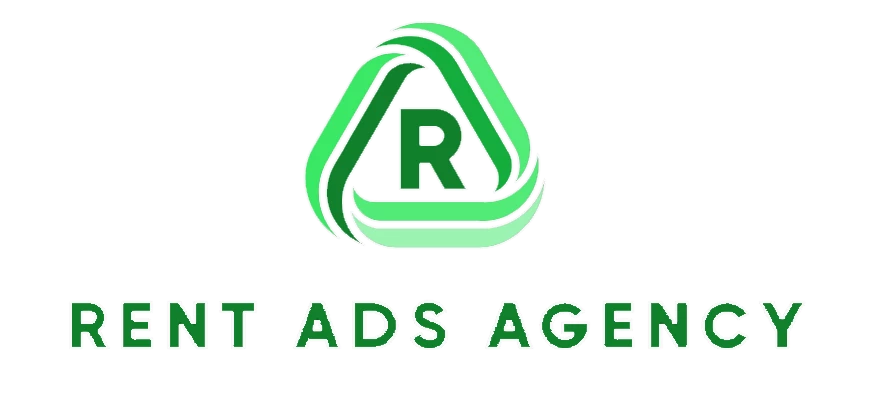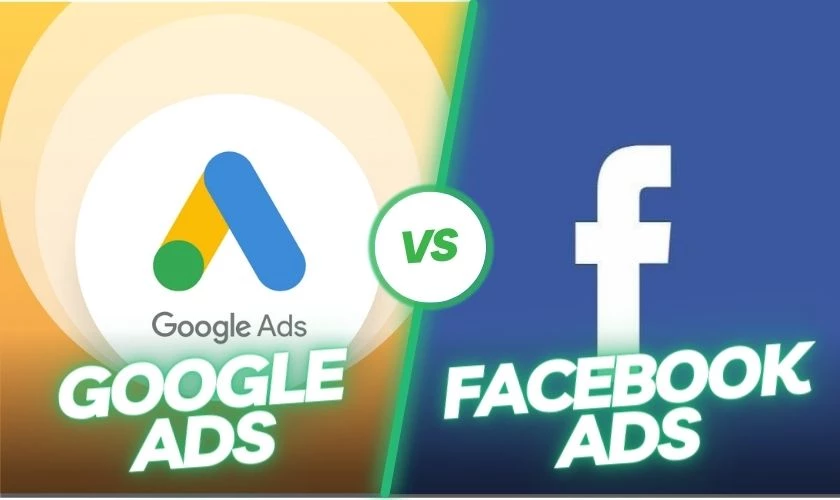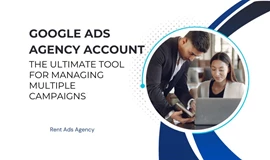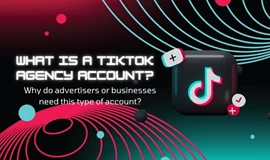Online advertising is now an essential need for any business. However, choosing the type of advertising that helps optimize costs and bring big profits to businesses is not easy. Today let's break down the key differences between the two dominant players Google Ads and Facebook Ads. Let's compare features, targeting capabilities, costs, and performance to help you determine the best platform to scale your e-commerce company. Learn whether Google's massive search reach or Facebook's granular targeting fits your needs.
What Is Google Ads?
Google Ads is Google's paid advertising platform that allows businesses to display ads across Google's vast network, including search results, YouTube, Gmail and partner websites. It works on an auction-style system where advertisers bid for ad placement and only pay when someone clicks on their ad.
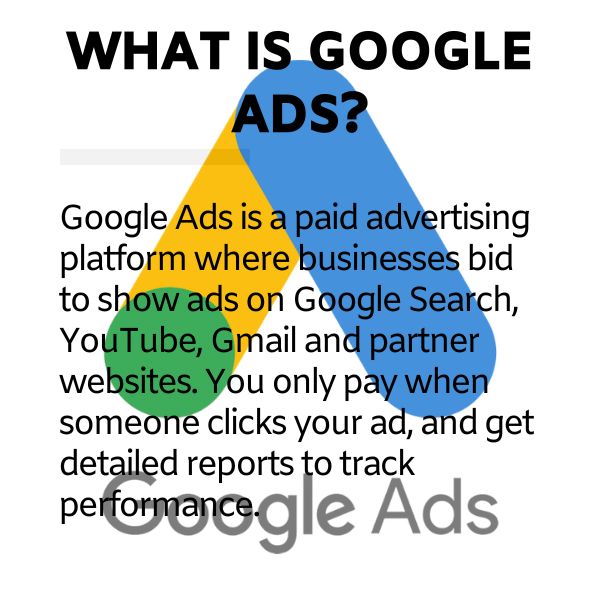
Key features of Google Ads:
- Wide reach across Google sites and Network partners
- Pay-per-click pricing - only pay when your ad is clicked
- Targeting options to show ads to your ideal customers
- Real-time reporting on ad performance with metrics like clicks, conversions and cost
- A/B testing capabilities to optimize ads
- Integrates with Google Analytics for more data and insights
Google Ads contrasts with organic search results, which are free based on relevance. With advertising, placement is based on bids and targeting. Businesses use Google Ads when they want greater visibility and control over how their brand and products surface to users. With robust targeting and analytics, it enables data-driven decisions on marketing spend.
What Is Facebook Ads?
Facebook Ads is Facebook's advertising platform that enables businesses to show ads to specific target audiences across Facebook, Instagram, Messenger and Audience Network. Companies can create customized ads in various formats like images, videos and carousels and serve them to relevant Facebook users based on demographics, interests, behavioral and other data Facebook collects.
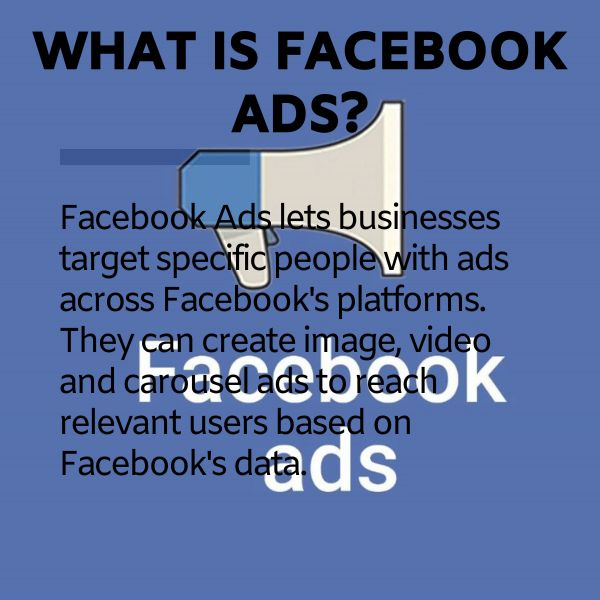
Key aspects of Facebook Ads include:
- Highly targeted ads based on Facebook's rich user data
- Flexible ad formats from photos and videos to Stories
- Ability to optimize ads for different objectives like website traffic, conversions, or brand awareness
- Built-in split testing capabilities
- Cost efficiency as you only pay when users interact with your ads
- Detailed analytics within Ads Manager showing reach, clicks, CTR and more
Facebook charges for ads on an auction basis, where businesses set budgets and bid for ad placements. You control spending and can adjust bids and targeting to achieve marketing goals. With its advanced targeting and value pricing, Facebook Ads are extremely popular for direct-response objectives.
What are the differences between Google Ads and Facebook ads?
While Google Ads and Facebook Ads share similarities as paid advertising platforms, they have key differences in their reach, targeting options, ad formats, cost & ROI and buyer Intent. Now let's learn about the differences between these two platforms.
Reach
Reach is a major differentiator between these platforms. Google's network, centered around search, provides an unparalleled scale - over 3.5 billion daily searches from users across geographies seeking information. With users actively querying for products and solutions, Google Ads can connect your business to consumers further up the purchase journey.
In contrast, Facebook's active user base is largely limited to its social network, although still substantial at 2.9 billion monthly active users. The intent level on Facebook can vary greatly depending on contexts. Those actively browsing their feeds may not be prime to purchase or convert.
In essence:
- Google's reach enables brands to get discovered by consumers searching for related information
- Facebook provides a more captive, but passive audience focused on social connections
For many advertisers, employing both networks makes sense - use Google Ads to drive discovery and seed interest, while Facebook reinforces brands through retargeting farther down the funnel. With such expansive reach but differing contexts, these platforms complement more than compete in this aspect. Your priorities for awareness versus conversions will inform the ideal channel mix.
Targeting options
Targeting capabilities are a major point of difference between these platforms. Google Ads focuses on keywords or phrases related to the user's search intent. You can target by search query, placement, device, location and other filters to hone in on the right consumers.
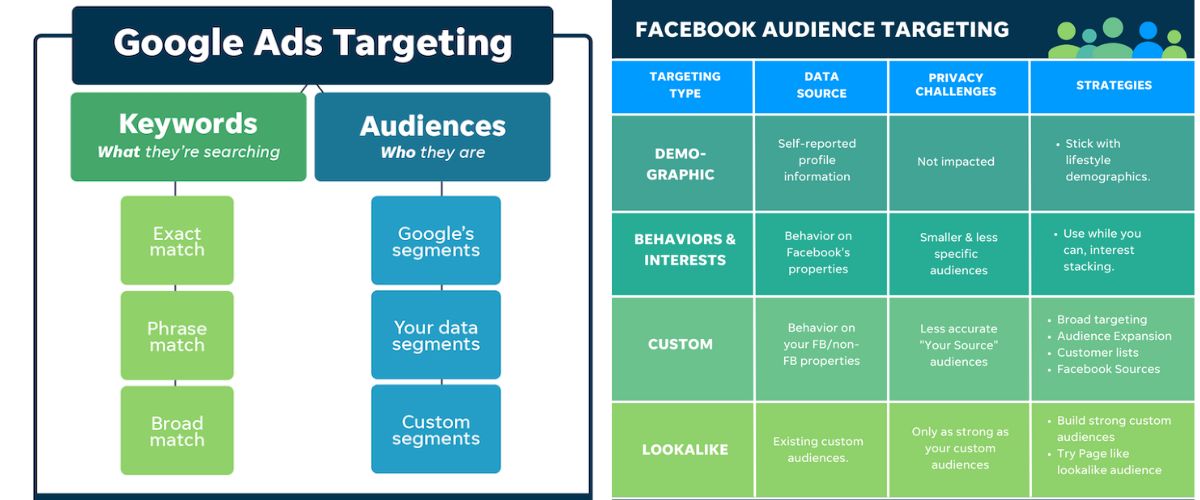
In contrast, Facebook's extensive user data enables more advanced targeting based on demographics, interests, behaviors and connections. Advertisers can create Custom Audiences from website visitors or app users, mirroring your best existing customers. Lookalike Audiences then find new users with similar attributes for targeting.
In essence:
- Google Ads provides robust intent-based targeting around search queries
- Facebook Ads enables precise demographic and interest-based targeting leveraging rich user data
Google's intent-based approach often provides the highest return on ad spend for direct-response campaigns focused on conversions. Facebook Ads are suitable to target more detailed information about users.
Ad formats
The ad formats and capabilities differ significantly between these platforms. Google Ads are centered around text-based search ads, though Display ads enable imagery within the Google Network. Facebook provides richer creative flexibility with various visual ad types optimized for social engagement.
Google Ads ad formats include:
- Text-based search ads
- Expanded text ads with additional description
- Display ads with visual components
- Shopping ads for product listings
- Video ads on YouTube and partners
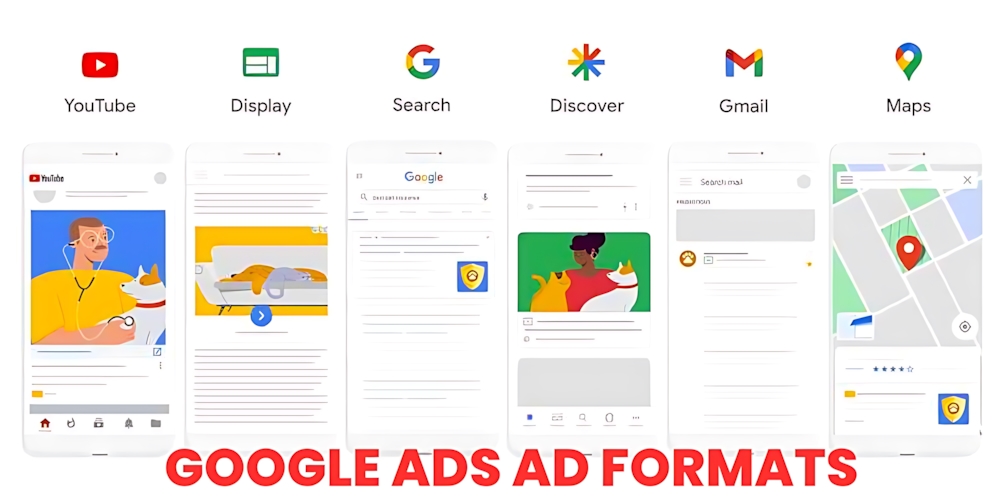
Facebook Ads offer more visually-driven formats like:
- Photo ads
- Carousel image/video ads
- Stories ads
- Canvas video ads
- Dynamic product ads
- Lead generation ads
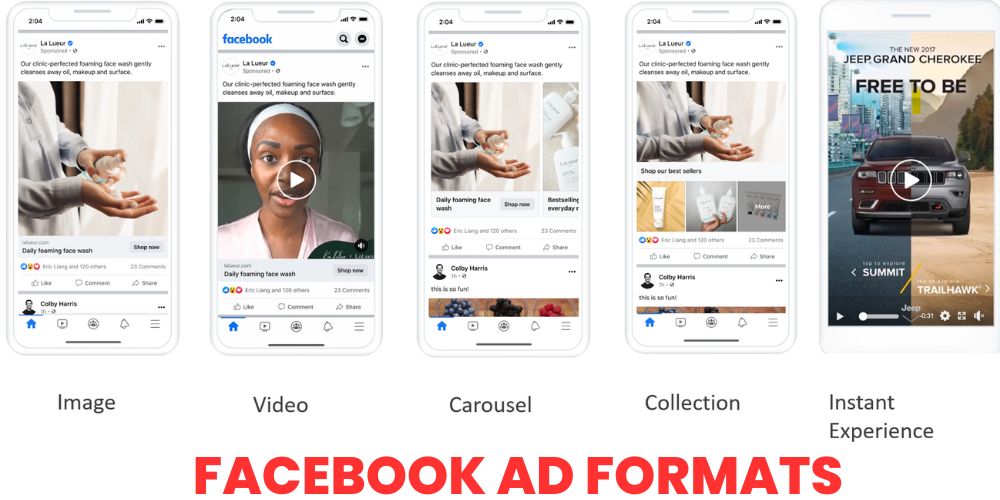
In essence:
- Google Ads facilitate direct response with concise text/image ads
- Facebook enables brand-building with more visual & interactive creative
The format you choose should align to your overall campaign objective. For informative text and efficient calls-to-action, Google text ads are ideal. To inspire and engage social audiences, Facebook's video and visual ads help creatives stand out. Evaluate which creative components will resonate most with your target users.
Cost and ROI
The pricing models differ between these platforms, impacting overall advertising costs and ROI potential. Google Ads operates on a pay-per-click (PPC) model, charging advertisers when users click their ads—Facebook bills for impressions, or when the ad appears on screen.
Some key metrics:
Average Cost-per-Click (CPC)
- Google Ads: $1.92
- Facebook Ads: $4.22 (Search ads)
Average Cost per 1,000 Impressions (CPM)
- Google Ads: $12.27
- Facebook Ads: $3.12
Average Click-through Rate (CTR)
- Google Ads: 2.5%
- Facebook Ads: 6.11%
Average Conversion Rate
- Google Ads: 8.25%
- Facebook Ads: 7.04%
While clicks on Google may convert more often, Facebook allows stretching your dollars further to drive awareness and reach. For direct-response campaigns, Google Ads may drive higher ROI due to highly qualified traffic. For branding objectives, Facebook's value pricing gives great bang-for-buck in impressions.
Assessing factors like click-through rates, conversion rates, and your sales cycles will clarify whether paying more per click on Google or getting volume at a lower price on Facebook makes sense for your goals and targets. Test both to see real-world performance for your business.
Buyer Intent
Buyer intent greatly differs between these platforms due to the mindsets users bring to each. Google searchers are actively querying, demonstrating the need or intent to purchase. Facebook users are there primarily for social connections.
This impacts the advertiser's ability to drive conversions:
- Google Ads aligns with high, urgent buyer intent - users want information or solutions. Ads can influence decisions in critical moments.
- Facebook Ads reaches audiences with lower intent. They may not be looking to buy yet. But retargeting past site visitors can convert warmed-up leads.
In essence:
- Google Ads facilitates a more immediate path to conversion given active buying signals
- Facebook Ads build brands and targets earlier in the funnel before intent peaks
For products where informative search precedes purchase, Google Ads places brands in front of motivated shoppers. Facebook nurtures interest over time through valuable content until the need arises.
Evaluating your typical sales cycle length and customer decision journey will determine the better fit. Short cycles suit Google Ads, longer require brand-building awareness on Facebook before conversion.
Want to dive deeper into the nuances of bidding and buying types within Facebook? Check out our comparison guide looking closely at "Facebook Buying Type: Auction vs Reach & Frequency" to understand the differences.
Ad Placement Options
Google Ads and Facebook Ads offer advertisers a variety of placement options to display ads to users:
Google Ads placements include:
- Search results pages
- Display Network websites/apps
- YouTube videos
- Gmail promotions
- Google Maps
Facebook Ads placements:
- Facebook News Feed
- Facebook Right Column
- Facebook Instant Articles
- Facebook Marketplace
- Facebook Video Feeds
- Facebook In-stream Videos
- Facebook Stories
- Facebook Search Results
- Messenger Inbox
- Messenger Stories
- Sponsored messages
- Audience Network
In essence:
- Google Ads appear prominently in search and across partner sites with content matching user queries and interests
- Facebook Ads enable brands to insert themselves into the social experience across Facebook's family of apps
Choosing placements comes down to aligning contexts with campaign goals. For quick conversions, Google search results bid for prime position in front of motivated users. For brand visibility, Facebook puts brands where social conversations happen.
Evaluate which ad formats and networks would interest your audience most to optimize awareness and conversion performance between the two advertising giants.
Ease of Use
Ease of use differs between these advertising platforms due to the complexity of features versus more intuitive ad creation.
Google Ads has a steeper learning curve for several reasons:
- Extensive options for campaign targeting, bidding, and ad extensions
- Additional complexity managing search campaigns with keywords and quality scores
- Powerful but dense reporting dashboard showing volumes of data
The platform is extremely robust but requires an investment in mastering PPC best practices to maximize value.
Alternatively, Facebook's visual, step-by-step ad creation makes it easier for beginners:
- Templated formats simplify ad building with images/video
- Clear interfaces for choosing audiences, placements and budgets
- Dashboard showing helpful metrics a glance
The perceived simplicity allows marketers to create campaigns quickly without formal training. However mastery still requires testing to determine optimal creativity and targets.
In essence, Google Ads takes more time and effort to learn than Facebook Ads.
Choosing the Right Platform Facebook ads vs Google ads
Determining the right advertising platform depends on your campaign objectives and target audience.
When to use Google Ads:
- High commercial intent: Reach people actively searching for related products/services
- Keyword targeting: Bid on relevant search queries with proven conversion value
- Remarketing: Engage visitors after they leave your website
- SEO support: Quickly amplify visibility while improving organic rankings
When to use Facebook Ads:
- Specific demographics: Leverage Facebook’s data to find your ideal buyer persona
- Brand building: Tell stories and foster community engagement
- Visual storytelling: Showcase products dynamically with video/image ads
- Lookalike audiences: Expand reach to new customers resembling current ones
Google Ads facilitates direct response for motivated searchers ready to purchase. Facebook nurtures awareness and relationships before conversions happen.
Assess your targets' intent level and commercial or discovery mindset before committing to budgets. Use both platforms to engage across the customer journey - with Google Ads prompting action when intent peaks and Facebook sustaining interest long-term until it converts.
Combine Google Ads and Facebook Ads
Rather than viewing these platforms as mutually exclusive alternatives, savvy marketers realize the two can work synergistically to achieve full-funnel objectives.
Instead of choosing one of the two platforms, why don't we combine both to achieve the goal for the entire channel?
Some key benefits of utilizing both include:
Complete Funnel Promotion
Leverage Facebook Ads for upper-funnel goals of awareness and consideration. Use Google Ads to drive conversions when search intent is highest. Covering all stages drives greater overall impact.
Cross-Channel Remarketing
Retarget website visitors across Google and Facebook to increase conversions. The more you display, the more your brand is recognized, thereby bringing customers closer to purchasing over time.
Strategic Audience Targeting: Take advantage of the different targeting strategies available on the two platforms. Thus allowing you to have a comprehensive approach targeting specific interests, demographics, and geographic locations across different channels.
Best Alternatives
Many platforms use pay-per-click (PPC) ads besides Facebook and Google like Microsoft Advertising, Reddit Ads, Amazon Ads, or TikTok Ads can further diversify exposure. Therefore, try to use A/B testing method to optimize cross-platform ads. Just keep repeating and persevering and you will find the best winning deals.
Google Ads and Facebook Ads, while distinct in their capabilities, work best together in modern marketing. Use Google ads to attract users with direct needs through exact keywords. Meanwhile, Facebook ads nurture awareness through retargeting. A multi-channel approach leverages both platforms' strengths for full-funnel impact.

Mohamed Fouad is a full-stack web developer and an entrepreneur who's really into advertising. He is the CEO of Rent Ads Agency, a company that helps businesses reach more customers through advertising. He graduated from Stanford University in 2018 and has over 4 years of experience in the tech industry.
